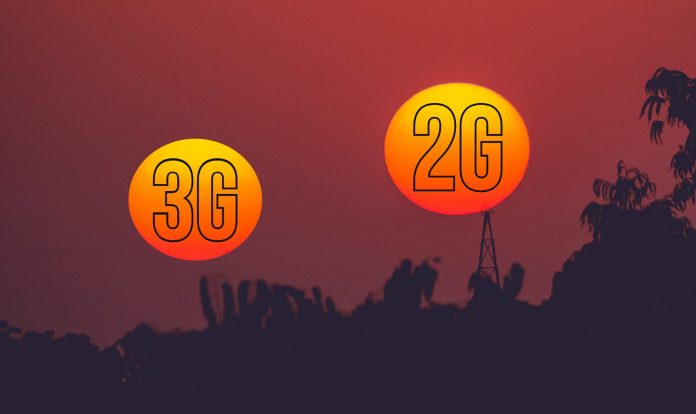Despite the UK government announcement on the 8th December regarding the phasing out of 2G and 3G networks in the UK, there remains a lack of clarity in the future of these technologies for the IoT market. This is because most providers are still yet to specify exactly when their networks will close, so the IoT market is left in a stalemate, unsure at what point 2G and 3G IoT equipment will go offline.
The mobile world is changing; not only is 5G coverage expanding rapidly across the globe but, in effect, 2G and 3G services will begin to phase-out until all networks are closed. Although the deployment of new networks symbolises an exciting future, there are still critical IoT devices in use today that rely upon 2G and 3G for connectivity.

There has long been ambiguity in the UK market about when 2G and 3G networks would finally close, but Vodafone, EE, Virgin Media, O2, and Three have now publicly agreed to switch off before 2033. While this decision provides an end date, networks could still choose to close sooner. As the government report states: ‘Some individual operators will switch off their networks, particularly their 3G networks, earlier than 2033, and will announce their own plans on timing’.
The IoT market is dependent on the decisions of these networks, and even with added pressure from the UK government, UK mobile operators have still not been forthcoming about their planned switch-off dates for their 2G and 3G networks. Almost half of customers have not yet been notified about planned network closures, resulting in many businesses remaining unaware that their IoT solutions are in peril.
This forces companies to wait to make important decisions on their 2G and 3G equipment. Which means there is still massive uncertainty about the future availability of these technologies. And customers will be bound by the decisions of preferred suppliers if they remain with a single network provider. This is especially important to consider in the IoT industry, as 2G and 3G components are added at the point of manufacture and cannot be easily replaced by 4G at a later stage.
Therefore, for industries that heavily rely on 2G and 3G equipment, such as vehicle tracking, medical monitoring, and lone working, when 2G and 3G networks go offline, so does their service. You might think, why not just invest in 4G and 5G equipment now? But, when 4G equipment is up to three times more expensive than 2G or 3G, it isn’t an option for most buyers to move to higher-cost technologies, especially in highly competitive markets.
One example that perfectly illustrates the potential impact of network sunsetting is the smart meter. According to the latest government statistics, there are an estimated 25 million smart meters in households or businesses in the UK. The vast majority are connected to 2G or 3G networks. The cost to immediately replace this volume of equipment would be huge. Providers need an alternate option that buys them time, allowing them to swap out smart meters, or other IoT devices, as close to their natural life cycle as possible.
This is where the multi-network SIM comes into play. A multi-network provider has access to networks across the country your equipment operates in, so while there’s a 2G or 3G network in existence, your equipment will still have a connection. The multi-network SIM has been a breakthrough in the IoT sector. It eliminates the need to physically swap traditional SIM cards when switching from one network to another. Choosing this SIM gives the market the confidence to continue trading as normal, knowing that their device will remain connected for as long as possible.
Looking to the future, as new networks begin replacing 4G and 5G, the telecoms and IoT industry needs a long-term solution to escape the cycle of replacing equipment. This will come in the form of eSIMs and iSIMs. These SIMs are certainly one way to future-proof your devices, eliminating the need for physical SIM swaps altogether. Additionally, both technologies eliminate the reliance on a single-generation network.
However, for now, choosing a multi-network SIM gives enterprises the knowledge that in these uncertain times, their equipment will continue working while there’s any 2G or 3G network available. While the industry continues to wait for a clearer announcement on the closure of 2G and 3G networks, choosing a multi-network SIM means that businesses can begin planning the replacement of equipment with greater certainty.
The roaming potential of multi-network SIMs is a sign of the future for cellular IoT – providing an immediate solution for the IoT market as 2G and 3G networks begin sunsetting. The unpredictability of the 2G and 3G sunset will remain until there is further clarification, so securing and supporting your networks with multi-network SIMs means your business can continue to operate with confidence that they will not be disrupted.
Once the market is armed with further knowledge of the situation, you will be able to use 2G and 3G for longer due to increased confidence, allowing you to save money and replace equipment once you gain a clear understanding of the changes.
About the author
Paul Craig is Head of IoT at OV (OVConnects). He has previously worked as Head Business Development at Intechnology Plc and as Mobile Business Development Manager at BT Wholesale.

